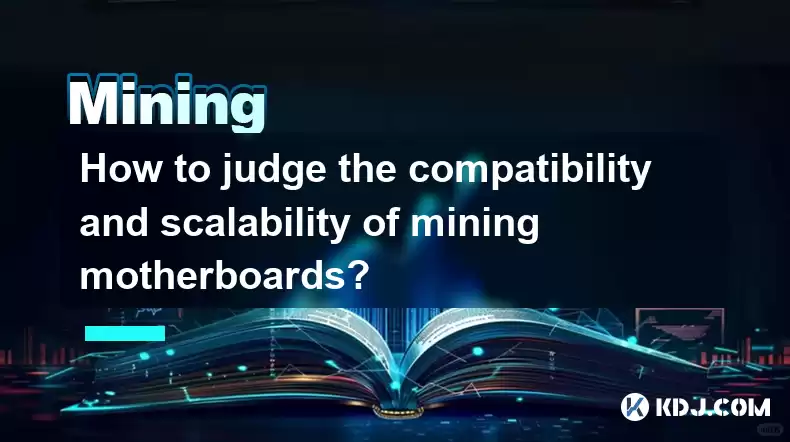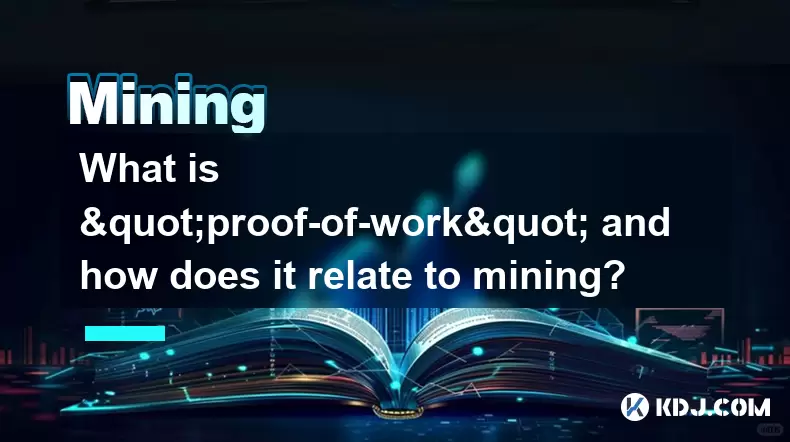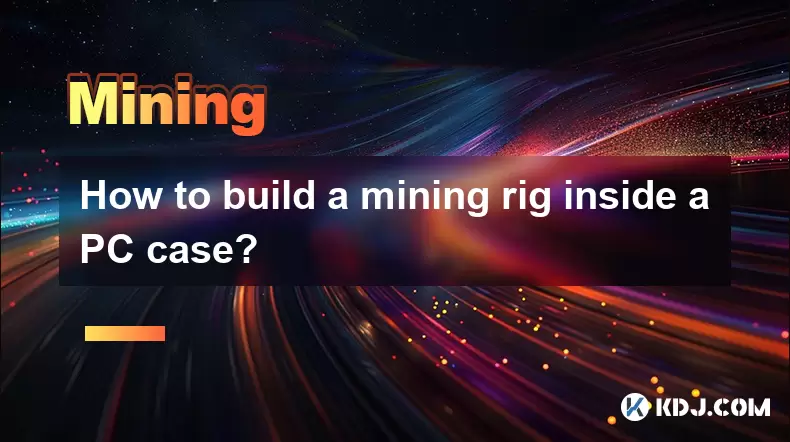-
 Bitcoin
Bitcoin $116700
0.24% -
 Ethereum
Ethereum $3973
4.34% -
 XRP
XRP $3.283
7.68% -
 Tether USDt
Tether USDt $1.000
0.01% -
 BNB
BNB $789.8
2.27% -
 Solana
Solana $176.2
3.31% -
 USDC
USDC $0.9999
0.00% -
 Dogecoin
Dogecoin $0.2238
5.14% -
 TRON
TRON $0.3389
-0.51% -
 Cardano
Cardano $0.7907
4.03% -
 Stellar
Stellar $0.4527
10.02% -
 Hyperliquid
Hyperliquid $41.07
4.27% -
 Sui
Sui $3.794
1.77% -
 Chainlink
Chainlink $19.49
10.40% -
 Bitcoin Cash
Bitcoin Cash $580.9
0.74% -
 Hedera
Hedera $0.2617
4.32% -
 Avalanche
Avalanche $23.41
3.67% -
 Ethena USDe
Ethena USDe $1.001
-0.03% -
 Litecoin
Litecoin $122.4
1.38% -
 Toncoin
Toncoin $3.364
1.49% -
 UNUS SED LEO
UNUS SED LEO $8.988
0.37% -
 Shiba Inu
Shiba Inu $0.00001295
2.82% -
 Uniswap
Uniswap $10.62
5.75% -
 Polkadot
Polkadot $3.922
4.46% -
 Dai
Dai $1.000
0.01% -
 Bitget Token
Bitget Token $4.494
2.15% -
 Monero
Monero $268.0
-1.30% -
 Cronos
Cronos $0.1523
3.68% -
 Pepe
Pepe $0.00001127
4.43% -
 Aave
Aave $285.4
4.85%
How to judge the compatibility and scalability of mining motherboards?
Choosing a mining motherboard requires careful consideration of chipset compatibility, PCIe lanes & bandwidth for GPU connections, robust power delivery & cooling, and sufficient RAM & storage to avoid performance bottlenecks.
Mar 02, 2025 at 10:00 pm

Key Points:
- Chipset Compatibility: Understanding which chipsets support the desired mining algorithms is crucial. Different algorithms require different processing capabilities.
- PCIe Lanes and Bandwidth: The number and type of PCIe slots, along with their bandwidth, directly impact the number of GPUs and their performance. Insufficient bandwidth bottlenecks the entire mining operation.
- Power Delivery and Cooling: Mining motherboards need robust power delivery systems (VRMs) to handle the high power demands of multiple GPUs. Effective cooling is essential to prevent overheating and instability.
- BIOS and Firmware: Specialized BIOS features and firmware updates often optimize performance for mining, enabling adjustments crucial for efficiency and stability.
- Memory and Storage: Sufficient RAM and storage are necessary to handle the operating system, mining software, and potentially large datasets.
How to Judge the Compatibility and Scalability of Mining Motherboards
Choosing the right motherboard for cryptocurrency mining is critical for profitability and efficiency. A motherboard's compatibility and scalability determine how many GPUs you can use, their performance, and the overall stability of your mining rig. Let's delve into the key factors to consider.
1. Chipset Compatibility:
The chipset is the central component connecting various parts of the motherboard. Different chipsets support varying numbers of PCIe lanes and have different capabilities. For example, a chipset designed for high-end gaming might not be optimized for mining, which often uses a large number of graphics cards. Always check the motherboard's specifications to ensure compatibility with your chosen mining algorithm and the number of GPUs you intend to use. Some chipsets are explicitly designed for high GPU density and offer features optimized for mining.
2. PCIe Lanes and Bandwidth:
PCIe lanes are the communication channels between the CPU and other components, including GPUs. The more PCIe lanes a motherboard offers, the more GPUs you can connect and the higher the bandwidth available. Insufficient PCIe lanes lead to bottlenecks, reducing the overall hash rate and mining efficiency. Pay close attention to the generation of PCIe (e.g., PCIe 4.0 offers higher bandwidth than PCIe 3.0). The bandwidth per lane also impacts performance; ensure your motherboard supports the required bandwidth for your chosen GPUs.
3. Power Delivery and Cooling:
Mining involves high power consumption. The motherboard's power delivery system (VRM) must be robust enough to handle the combined power demands of multiple GPUs, the CPU, and other components. Insufficient VRMs can lead to instability, voltage drops, and even damage to components. Adequate cooling is equally crucial. Look for motherboards with sufficient heatsinks and fan headers to effectively dissipate heat generated by the GPUs and other components. Overheating can significantly reduce performance and lifespan.
4. BIOS and Firmware:
The BIOS (Basic Input/Output System) and firmware play a crucial role in managing the motherboard's hardware. Many mining motherboards come with specialized BIOS features designed to optimize performance for mining. These features might include options to adjust PCIe lane settings, power delivery, and fan speeds. Check for BIOS updates that offer improved stability and performance for mining. Some manufacturers provide custom BIOS versions specifically optimized for cryptocurrency mining.
5. Memory and Storage:
While not as crucial as the other factors, sufficient RAM and storage are still necessary. The operating system, mining software, and any monitoring tools require RAM. Storage is needed for the operating system and potentially large datasets for some mining algorithms. Consider the RAM and storage requirements of your chosen mining software and operating system when selecting a motherboard. More RAM generally allows for smoother operation, especially when managing multiple GPUs.
6. Number of GPU Slots:
The number of available PCIe x16 slots directly determines how many GPUs you can install. Some motherboards offer multiple x16 slots, while others may have fewer, or a mix of x16 and x8 slots. The use of risers is often necessary to connect additional GPUs beyond the physical slots. Ensure the motherboard has sufficient slots or supports the use of risers without significantly impacting performance. Check the motherboard specifications for the maximum number of GPUs supported.
7. Expansion Slots:
Beyond GPU slots, consider the availability of other expansion slots, such as M.2 slots for additional storage. This can be helpful for monitoring data logging or storing mining logs.
Common Questions:
Q: What are the best chipsets for mining motherboards?
A: There isn't one "best" chipset, as the optimal choice depends on the specific mining algorithm and the number of GPUs. Chipsets with many PCIe lanes and high bandwidth, such as those found in high-end server motherboards, are generally preferred.
Q: How many PCIe lanes do I need for my mining rig?
A: The required number of PCIe lanes depends on the number of GPUs and their bandwidth requirements. More GPUs generally require more lanes. Aim for a motherboard with enough lanes to avoid bottlenecking.
Q: What is the importance of VRM cooling in mining motherboards?
A: The VRMs (Voltage Regulator Modules) deliver power to the GPUs. Insufficient cooling can lead to overheating, causing instability, reduced performance, and potentially damaging the components. Effective cooling is crucial for reliable and efficient mining.
Q: How do I check my motherboard's BIOS version and update it?
A: The method for checking and updating your BIOS varies depending on the motherboard manufacturer. Consult your motherboard's manual for specific instructions. Generally, it involves accessing the BIOS settings during boot and looking for a BIOS update option.
Q: What type of storage is best for a mining rig?
A: For a mining rig, a solid-state drive (SSD) is generally preferred over a hard disk drive (HDD) due to its faster read and write speeds. This improves the responsiveness of the mining software.
Disclaimer:info@kdj.com
The information provided is not trading advice. kdj.com does not assume any responsibility for any investments made based on the information provided in this article. Cryptocurrencies are highly volatile and it is highly recommended that you invest with caution after thorough research!
If you believe that the content used on this website infringes your copyright, please contact us immediately (info@kdj.com) and we will delete it promptly.
- Bitcoin, Litecoin, and Avalanche: Decoding the Crypto Buzz in the Big Apple
- 2025-08-09 00:30:12
- Pengu Takes Flight: Can This Solana Meme Coin Conquer the Top 3?
- 2025-08-09 00:50:13
- Coinbase's Big Bet: DEX Trading and the Everything App Vision
- 2025-08-09 01:30:12
- Ethereum and Shiba Inu: Navigating the Bull Move
- 2025-08-09 00:35:12
- Dogecoin, AI Coins, and CMC Listings: What's Hot and What's Not
- 2025-08-09 01:35:51
- Navigating the Crypto Market in 2025: Smart Decisions for Meme Coin Investing
- 2025-08-09 00:55:55
Related knowledge

What is "proof-of-work" and how does it relate to mining?
Aug 07,2025 at 02:03pm
Understanding the Concept of Proof-of-WorkProof-of-work (PoW) is a consensus mechanism used in blockchain networks to validate transactions and secure...

What are the differences between mining on Windows vs. Linux?
Aug 06,2025 at 11:29pm
Overview of Cryptocurrency Mining PlatformsCryptocurrency mining involves using computational power to solve complex cryptographic puzzles and validat...

How to use an old computer for cryptocurrency mining?
Aug 07,2025 at 12:42pm
Understanding the Feasibility of Using an Old Computer for MiningUsing an old computer for cryptocurrency mining may seem outdated, but it is still te...

Can you mine cryptocurrency using solar power?
Aug 07,2025 at 12:00am
Understanding the Basics of Cryptocurrency MiningCryptocurrency mining involves validating transactions on a blockchain network by solving complex cry...

How to build a mining rig inside a PC case?
Aug 06,2025 at 11:01pm
Understanding the Basics of a Mining Rig in a PC CaseBuilding a mining rig inside a PC case involves transforming a standard computer chassis into a d...

What are the best cryptocurrencies to mine with an ASIC?
Aug 08,2025 at 01:22am
Understanding ASIC Mining and Its Role in CryptocurrencyASIC stands for Application-Specific Integrated Circuit, a specialized hardware designed to pe...

What is "proof-of-work" and how does it relate to mining?
Aug 07,2025 at 02:03pm
Understanding the Concept of Proof-of-WorkProof-of-work (PoW) is a consensus mechanism used in blockchain networks to validate transactions and secure...

What are the differences between mining on Windows vs. Linux?
Aug 06,2025 at 11:29pm
Overview of Cryptocurrency Mining PlatformsCryptocurrency mining involves using computational power to solve complex cryptographic puzzles and validat...

How to use an old computer for cryptocurrency mining?
Aug 07,2025 at 12:42pm
Understanding the Feasibility of Using an Old Computer for MiningUsing an old computer for cryptocurrency mining may seem outdated, but it is still te...

Can you mine cryptocurrency using solar power?
Aug 07,2025 at 12:00am
Understanding the Basics of Cryptocurrency MiningCryptocurrency mining involves validating transactions on a blockchain network by solving complex cry...

How to build a mining rig inside a PC case?
Aug 06,2025 at 11:01pm
Understanding the Basics of a Mining Rig in a PC CaseBuilding a mining rig inside a PC case involves transforming a standard computer chassis into a d...

What are the best cryptocurrencies to mine with an ASIC?
Aug 08,2025 at 01:22am
Understanding ASIC Mining and Its Role in CryptocurrencyASIC stands for Application-Specific Integrated Circuit, a specialized hardware designed to pe...
See all articles

























































































